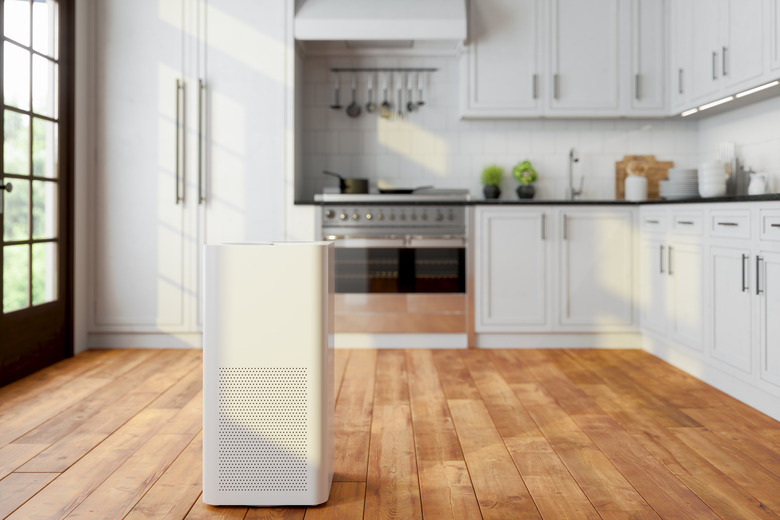How To Clean Mold Spores Out Of The Air
Though they may be invisible, mold spores in the air can create major health problems. Breathing in mold spores may trigger asthma or allergy symptoms in many people. There's no simple test that will tell you whether there's a high concentration of mold spores in the air, though sometimes, a musty smell is a telltale sign of mold growth. Keeping the air clean and addressing any mold evidence you see in your home is the best way to approach a mold problem.
Sources of Mold Spores
It's important to understand the source of a mold issue because cleaning the air isn't a long-term solution. If anyone in your household is having allergy symptoms, like itchy and watery eyes and congestion, while in the home and there's no other obvious root cause, it's likely that mold is growing somewhere within the house.
Mold can flourish in just about any moist place. Bathrooms, basements, kitchens and laundry areas are common culprits of a mold infestation. Any plumbing leak can lead to mold growth. Mold can also be found in and around air conditioners, humidifiers and dehumidifiers, which can then throw the spores into the air.
Cleaning Mold Spores Out of the Air
It's impossible to clean all mold spores out of the air. Unpleasant though it may be to think about, there's always going to be some level of mold in your air. The most effective way to eliminate mold spores is by using an air purifier with a HEPA (high-efficiency particulate air) filter. This kind of filter will theoretically clear up to 99.7 percent of mold spores and other particulates from the air, though the efficiency of the filter will depend on the size of the specific particulates in your air.
How many HEPA air purifiers you'll need to use depends on the size of your home, the scope of the mold problem and the strength of the purifier unit you buy. A small HEPA air purifier may be powerful enough to clean the air in a small bedroom, while a larger HEPA purifier may be able to clean the air in a room that's 400 square feet or larger. It may be necessary to set up purifiers in multiple rooms to tackle a significant issue.
Preventing Mold Spores in the Air
Preventing mold growth is the best way to minimize the presence of mold spores in the air. Use dehumidifiers to keep the humidity in your home between 30 and 50 percent. Increase ventilation in moist areas using exhaust fans and open windows to keep bathrooms and laundry rooms dry. Fix leaks in the bathroom sink or other water sources as soon as they happen.
Regularly cleaning the unit and cleaning or replacing the filter is an important step for humidifier mold prevention. If you see mold growth near vents of your HVAC system, don't run the heat or AC until you get your ducts cleaned. Any mold that's growing inside the ducts will be blown throughout your home.
Do not use bleach to clean mold. To kill mold on walls, use a sturdy scrub brush, liquid detergent and water to scrub visible patches of mold. Wear protective gloves and a mask while working around mold. After cleaning the mold, aim running fans at the area until it's dry. If the mold growth covers an area exceeding 10 square feet, consult a professional mold remediation provider. The problem may be too great for you to safely handle it alone.
References
- United States Environmental Protection Agency: Mold Course Chapter 2: Why and Where Mold Grows
- United States Environmental Protection Agency: What Is a HEPA Filter?
- New York State Department of Health: Mold and Your Home: What You Need to Know
- United States Environmental Protection Agency: Should I Use Bleach to Clean Up Mold?
